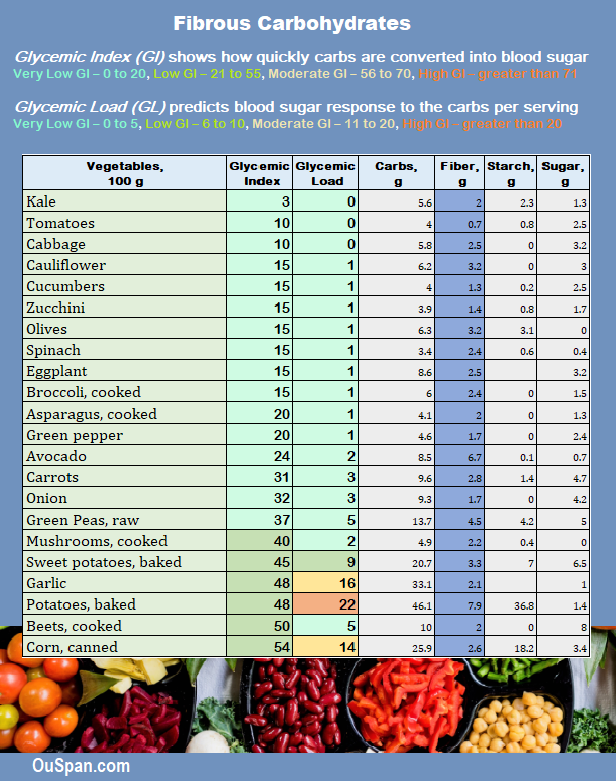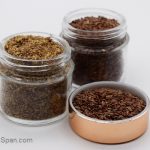
Takeaways
• Consumption of fiber-rich foods is associated with potential longevity
• Chemically, fiber consists of carbohydrates: cellulose, pectin, and inulin
• Soluble fiber slows carb digestion of carbohydrates and glucose absorption
• Insoluble fiber absorbs water, creates volume, and promotes bowel motility
A variety of researches have demonstrated that dietary fiber is essential for health and is a vital component of a nutritionally balanced diet. Fiber has beneficial effects on disease prevention and even on its reversion. A majority of Americans do not get an adequate amount of dietary fiber. The deficit of this important nutrient is associated with the risk of cardiovascular disease, diabetes, cancers, hypertension, and obesity.
Consumption of fiber-rich foods is linked to potential longevity. Nine-year research, initiated by the National Institutes of Health, has found that adults ages 50 and older who consume an adequate amount of fiber have a 22 % lower risk of total mortality.
Another study showed that fiber is essential for health because it reduces the risk of death from specific diseases such as cardiovascular, infectious, and respiratory by 24% - 56% in men and 34% - 58 % in women. Also, eating higher fiber food is key to preventing and reversing type 2 diabetes.
Nearly all dietary fiber is originated from plants: legumes, vegetables, fruits, grains, nuts, and seeds. Chemically, fiber consists of carbohydrates: cellulose, pectin and inulin; and non-carbohydrates: gums and lignin.
Playing a significant role in digestion, dietary fiber, unlike other carbohydrates, such as sugar and starch, is not a nutrient. Fiber is non-digestive for the human. People do not have special enzymes like some animals to split bonds between fiber molecules and destroy solid cell walls. This is why dietary fiber does count as extra calories.
Instead of being absorbed into the blood, fiber, mixing with the other food, enters into the small intestine and slows down the absorption process of all nutrients, including sugar and fat. This means that a high-fiber meal reduces after-meal sugar spikes, makes us feel fuller with fewer calories, the feeling of satiety last longer.
Soluble and Insoluble Dietary Fiber
 Dissolved by water, soluble fiber (pectin and inulin) forms a jelly-like substance that interferes with the absorption of dietary fat and cholesterol, helping lower low-density lipoprotein (LPD), or "bad" cholesterol.
Dissolved by water, soluble fiber (pectin and inulin) forms a jelly-like substance that interferes with the absorption of dietary fat and cholesterol, helping lower low-density lipoprotein (LPD), or "bad" cholesterol.
Soluble fiber also slows carb digestion and glucose absorption into the bloodstream. This, in turns, prevents rapid rises in blood sugar level after a meal. Water-soluble fiber is found in all plant food: legumes, grains, fruits, vegetables, nuts, and seeds.
Insoluble fiber (cellulose, hemicelluloses, and lignin) absorbs water, creates volume, and promotes bowel motility. This type of fiber helps relieve constipation, prevents the risk of diverticulitis and softens stool, reduces the discomfort associated with hemorrhoids. Insoluble fiber is found in whole grain, legumes, nuts, and seeds.
Health Benefits of Dietary Fiber
- Aids in weight control, makes us feel full
- Interferes with fat absorption, decreases the risk of obesity
- Reduces the chance for colon cancer
- Prevents the risk of diverticulitis
- Prevents constipation
- Reduces the discomfort associated with hemorrhoids
- Slows down the carbohydrates digestion and glucose absorption into the bloodstream
- Inhibits absorption of cholesterol
- May help reduce gallstones
- Inhibits absorption of bile acid that helps break down fat.
 The recommended daily allowance (RDA) of fiber consumption is 25 grams for women and 40 grams for men. However, according to a USDA survey, average fiber intake in the United States is 12-18 grams a day only.
The recommended daily allowance (RDA) of fiber consumption is 25 grams for women and 40 grams for men. However, according to a USDA survey, average fiber intake in the United States is 12-18 grams a day only.
The general direction of the Dietary Guidelines for Americans is eating 45-65 percent carbohydrates of your total daily calorie intake. This means for a 2,000 calories diet, carbohydrates should be between 75 to 100g per meal, assuming three meals a day.
Dietary fiber intake may be increased by including carbohydrates with a higher fiber density in the diet, replacing refined grains with whole grains and consuming whole fruits and high fiber smoothies instead of fruit juice.
Too little fiber leads to
- Constipation
- Diverticulitis
- Hemorrhoids
- Irritable bowel syndrome.
Too much fiber leads to
- Abdominal pain
- Bloating
- Diarrhea
- Interference with the absorption of iron, calcium, magnesium, and phosphorus.

How to meet the goal
According to the Institute of Medicine, the total recommended the daily intake of fiber for adults:
- Women 50 years and younger - 25 grams
- Women over 50 years - 21 grams
- Men 50 years and younger - 38 grams
- Men over 50 years - 30 grams
Check the page High Fiber Foods for Healthy Living for tables showing foods in terms of their fiber density in grams and % daily value, based on the recommended daily intake of 30 grams fiber per day. Choosing fiber-rich foods, eating more fruits and vegetables and consuming whole grains with 3 grams or more of fiber per serving size, will help you to meet the goal.
Related
 High Fiber Foods for Healthy Living
High Fiber Foods for Healthy Living
An average, 97 % of Americans don’t get a substantial amount of dietary fiber. The deficit of fiber is related to the high risk...
 Why High Fiber Smoothie Should be Part of Your Diet?
Why High Fiber Smoothie Should be Part of Your Diet?
Consumption of high fiber food is essential for disease prevention and associated with potential longevity...
 Flaxseed and Flaxseed Oil – Health Benefits
Flaxseed and Flaxseed Oil – Health Benefits
A nutritional treasure, flaxseed is a great source of health-beneficial components including the plant form of Omega-3...
Diane Quagliani, MBA, RDN, LDN and Patricia Felt-Gunderson, MS, RDN, LDN. Closing America’s Fiber Intake Gap. American Journal of Lifestyle Medicine. NCBI. 2017


